Some things are resistant to change, others less so. In Ferrari’s case, there are a few paths that the company has said it will never walk down – the SUV is one you’ll keep hearing, and the other has to do with an extra couple of doors on a car.
The last has been reiterated countless times by key personnel at the automaker, both past and present. No dilution of the ideal, no wavering of the cause. As such, the idea of a production four-door Ferrari (the oddity that was the Pinin concept from three and a half decades ago doesn’t count) is very much a dead-end street.
The persistence in standing its ground in such a manner is admirable, considering that doubling up the bodyshell apertures would undoubtedly bring about a much higher adoption rate, as a certain Teutonic competitor would happily point out. Still, there was a time when turbocharging wasn’t a particularly choice route either for the automaker, but that seems to have been embraced fondly enough, so never might not be forever.
Until that happens (yes, we know, the answer is no), if you want to carry more than two comfortably in a Ferrari, you’ll have to continue doing it in a two-door one, and at present, the GTC4Lusso provides the only means to accomplish that feat.
The two-door, four-seater shooting brake is essentially a facelift of the Ferrari FF, which made its debut in 2011. The Ferrari Four moniker has been ditched and the revamped car – which premiered in Geneva back in March – has been given a new designation along with the mid-cycle rework.
The new name is a bit of a mouthful, but there’s method in the convention; the prefix pays homage to some illustrious predecessors including the 330 GTC, while the numeral continues to denote the four-seater (and four-wheel drive configuration). The Luxury suffix, meanwhile, is a suitable reference to the plusher and better appointed interior as well as improved level of modern conveniences.
Some marginal changes to the car’s exterior dimensions over the FF – the GTC4Lusso measures in at 4,922 mm long, 1,980 mm wide and 1,383 mm tall, which makes it 15 mm longer, 27 mm wider and four millimetres taller than the latter.
Styling-wise, revisions to the front end consist of new headlights, which borrow design cues from the units on the 488 GTB, a new, larger grille with integrated air intakes – to improve the efficiency of the radiators – as well as new air vents on the wing, the latter a nod to those seen on the 330 GTC.
At the back, the curve of the roof has been lowered, but retains enough volume to not compromise space and comfort for all four occupants, with a 16 mm increase in rear leg room being touted. Boot volume remains at up to 800 litres with the 50:50 split rear seats folded down. Fresh elements are made up of a new roof-mounted rear spoiler, a triple-fence diffuser and a four-lamp tail light cluster (previously, two), the last again another dive into the past.
Aside from making the looks – which have arguably been polarizing – more organic to the eye, the remodelling work has also improved aerodynamics, with a six percent reduction in drag and aerodynamic efficiency from the FF.
Inside, trim and material choices are up from that found on the FF, and the restyled dashboard, now presented in what’s called a Dual Cockpit architecture, gives the entire forward presentation a less busy look.
There’s a new, more compact steering wheel, brought about as a result of a smaller airbag, which improves the visibility of both the rev counter and the dual five-inch TFT VGA displays housed in the main cluster. Controls switches have also been revised with regards to shape, function and positioning. Elsewhere, a new infotainment system finds its way on.
The latter features a 10.25-inch full HD capacitive touchscreen, with navigation and Apple CarPlay connectivity in the mix. The unit has a processor that’s eight times more powerful than the previous system, and a new user interface makes accessibility to functions a much simpler affair.
There’s also an optional 8.8-inch full HD touchscreen display for the passenger, placed within the occupant’s direct field of vision on the dash console. It’s not new, because the FF had one too, though this one is now in colour. Also, the unit doesn’t merely display the car’s performance statistics and status as before, but allows interaction with the onboard system, with independent control of what’s being shown on the main central screen.
The GTC4Lusso retains the 6.3 litre V12 as seen in the FF, but the Tipo 140 EB has been updated for this application, with newly-designed piston heads, multi-spark injection and the latest evolution of the automaker’s anti-knock control software to be found. The unit’s compression ratio has also been increased to 13.5:1 from 12.4:1.
Output from the revised mill is 680 hp at 8,000 rpm and 697 Nm at 5,750 rpm (with 80% of twist available from 1,750 rpm), an increase of 30 hp and 14 Nm over that on the FF. Working with a seven-speed F1 DCT transmission, performance figures include a 0-100 km/h time of 3.4 seconds and a 335 km/h top speed, virtually identical to the FF.
The automaker’s 4RM quattro ruote motrici (four-wheel drive) system has also been revised. It’s now known as the 4RM-S, and now comes with four-wheel steering, designed here to improve the vehicle’s agility in corners. There’s also Side Slip Angle Control, now in its fourth-gen (SSC4) form. The system helps provide greater longitudinal acceleration out of corners, and integrates control of the E-Diff electronic differential and SCM-E Magnaride active dampers into its workings.
It’s not just bells and whistles. The plethora of fours may provide all the technical charm, but the new car is also noticeably more refined. For one, in-car noise levels are lower than before, courtesy of the use of improved filtering and damping material, a quieter AC system, a 20% improvement in rigidity of the car’s chassis attachment points and the inclusion of a new electronic exhaust bypass valve.
By itself, it wouldn’t have been so apparent, the improved NVH levels, but a spin in an FF arranged by Naza Italia a few days prior to the GTC4Lusso drive in Brunico, Italy, served up notice as to how far things have progressed. There’s no shortage of noise on the old car, which is fine if you’re barreling about, but it’s not particularly exciting or pleasant under heavy stop-start conditions, becoming an incessant drone after a while.
The GTC4Lusso is a far quieter proposition, especially in low-speed conditions. It’s quite happy to amble along, with great civility at that and a ride to match. The downside to it is that as the speed increases, the aural note coming off the engine is also less pronounced inside the cabin, which is a shame because the soundtrack coming off the mill under throttle is quite spectacular.
At lower speeds the engine sometimes feels light on torque, which is something the new GTC4Lusso T will suitably address, but get it going and the F140 is in its element. There’s nothing quite as feral – and involving – like a large displacement NA mill at full pelt. Unbeatable, really.
Sadly, such hysterical fun may be coming to an end, a victim of ever tightening emissions regulations. Indeed, the new dawn may have already arrived – the advent of the 3.9 litre turbo version may herald only the blown route for the next GT, much like the 488. Fingers crossed then, if you’re a NA fan.
Stonking engine, and fast it is, as you’d expect, but plenty of other things to like about the GTC4, and the handling is one of them. It’s no hot hatch (1,920 kg kerb weight), but there’s nothing ungainly about how it manages corners. The mountainous route around the South Tyrol area threw up plenty of twisty terrain, but with the exception of a few ridiculously angled corners, the car never felt unwieldy or lost its coherency.
The level of grip, simply put, was outstanding, the four-wheel steering doing a remarkable job of tucking the car cleanly in and out of corners. On faster, less complex road sections, effectively the car’s natural stomping ground, the GTC4 was downright sterling – fast, decisive, composed, if a bit clinical in overall character.
As for ride coming off the active dampers and 20-inch wheels (with staggered 245/35 front and 295/35 rear tyre), it could arguably be plusher for a GT, but it’s nonetheless well sorted, with very little harshness. Being far more compliant than the FF – which it is – will aid the cause, for sure. In terms of wheel choices, I thought the five double-spoke forged diamond design looked better visually on the car.
Elsewhere, the new infotainment system scores points too, both from an operating and presentation point-of-view. The graphics are first-rate, and it feels less cumbersome than that on the outgoing car. As for the passenger side screen, it’s neat enough to use, though it’s likely to become an untouched novelty in the long run. Definitely looks great with the colour added.
In terms of seating, the fronts do well from a comfort and support perspective, and the rear seats look workable enough, as highlighted by my co-driver Surasak Jarinthong. The lanky Thai journo, who sat at the back for a bit, said comfort levels were more than acceptable. Certainly, the rear doesn’t look to be an issue for up to intermediate distance trips.
So, there it is, a GT that takes off where the older car left off, but in a better appointed, more engaging and refined package, continuing to be aimed very much at drivers wanting a practical, comfortable grand tourer without compromising on traditional Ferrari performance.
From a Malaysian perspective, the GTC4Lusso is due to arrive sometime in Q1 next year, but it remains to be seen if the NA will make it here, given the appearance of the rear-wheel drive turbo, which looks to be a more eye-catching option.
The market for a two-door, four-seater shooting brake isn’t massive, but Ferrari says the type has appeal, especially with younger customers, who are apparently 10 years younger than those who purchase the company’s two-seaters. They also actually use the car to ferry four in more than 60% of trips.
Which begs the question, would that percentage – and sales of the car itself, for that matter – go up significantly if there were an extra couple of doors in that equation? Oh, forget that was even asked. It’ll never happen.
Looking to sell your car? Sell it with Carro.

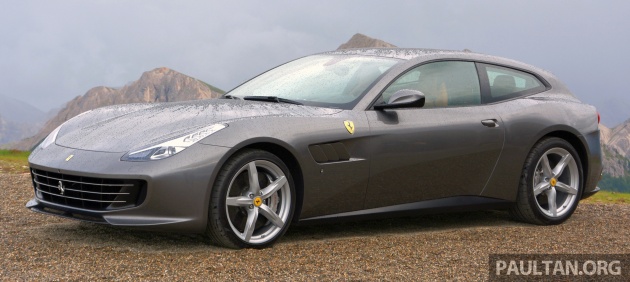
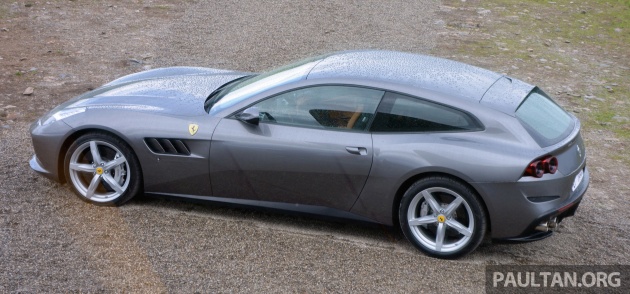










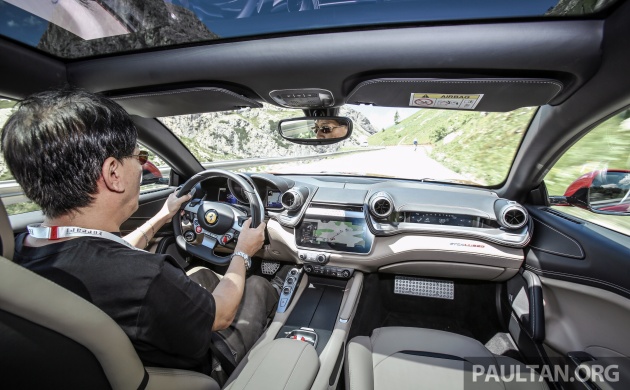
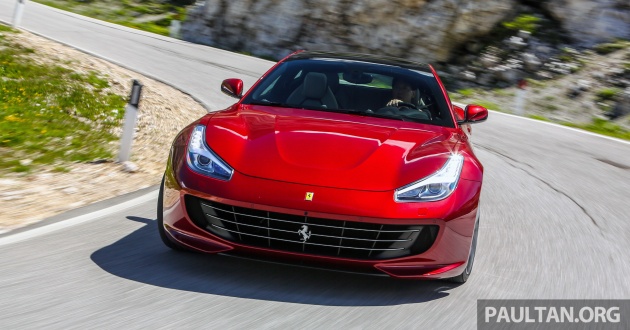

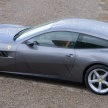
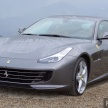
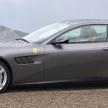






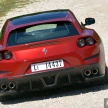

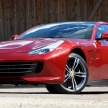
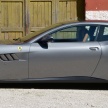


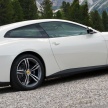
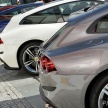
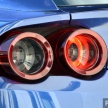
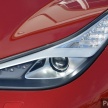
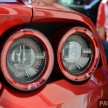

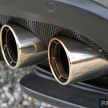

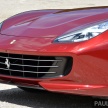
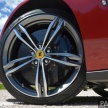
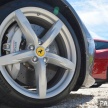
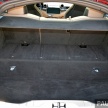
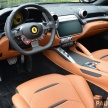
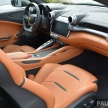
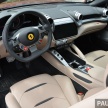
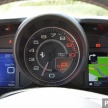
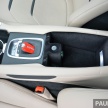
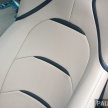
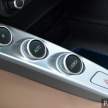
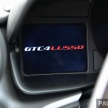
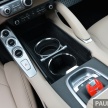
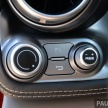
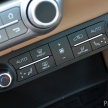
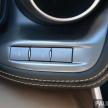
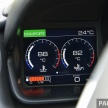
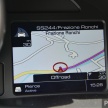
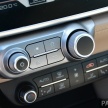
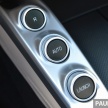
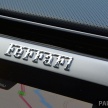
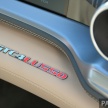
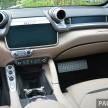
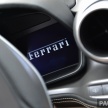

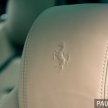
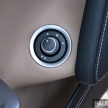
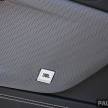
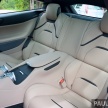
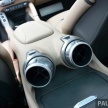
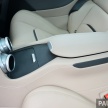


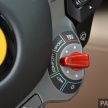
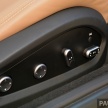
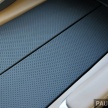

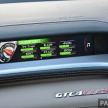
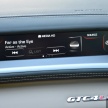
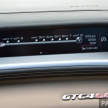
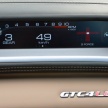
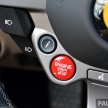
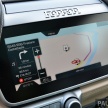

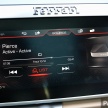
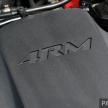
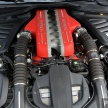

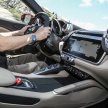
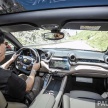







hmmmm glorified Alfa romeo Giulietta.
No one will question Ferrari credential as a Sports car manufacturer. In fact if Ferrari say they are No 2, no one dare to say they are No 1.
But in the GT category, they are in the company of Bentley Continental GT, Rolls-Royce Wraith, Aston Martin DB11, Porsche Panamara GT, Merc AMG S63 Coup, its very own F12 Berlinetta & New BMW i8.
All the above are worthy to be called champion of GT car.
IMO, the back portion of the car could have been better. The only advantage/selling point is the awesome 6.3 liters V12 sound of the engine.
Happy reading & commenting folks. Cheers …